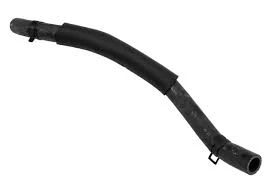oil pan and gasket
Understanding Oil Pans and Gaskets Essential Components for Engine Health
When it comes to the efficient operation of an automobile engine, many components play a crucial role. Among these, the oil pan and gasket stand out as vital elements that ensure the smooth running and longevity of the engine. Understanding the purpose and function of these components is essential for any car owner or enthusiast.
What is an Oil Pan?
The oil pan, also known as the sump, is a crucial part of an internal combustion engine's lubrication system. Typically made from metal or reinforced plastic, it is located at the bottom of the engine block. The primary function of the oil pan is to store the engine oil, which is critical for lubricating various moving parts within the engine.
As the oil circulates through the engine, it absorbs heat generated by the engine's operation, reduces friction between moving parts, and helps to keep the engine components clean by trapping debris and contaminants. The oil pan not only holds the oil when the engine is off but also serves as a reservoir for oil that is pumped through the engine during operation.
The Importance of the Oil Pan
A well-functioning oil pan is essential for several reasons
1. Oil Storage It provides a sufficient volume of oil necessary for effective lubrication. 2. Protection The pan protects the oil from external contaminants and impacts from debris on the road. 3. Heat Dissipation Since the oil absorbs heat, the oil pan assists in dissipating this heat away from the engine, contributing to overall thermal management. 4. Oil Retrieval The design of the oil pan ensures that oil can easily flow back to the oil pump, maintaining continuous lubrication.
What is an Oil Pan Gasket?
oil pan and gasket

The oil pan gasket is another critical component in the interaction between the oil pan and the engine block. This gasket is typically made of rubber, cork, or silicone and serves as a seal that prevents oil from leaking out of the junction where the oil pan meets the engine.
The gasket's primary purpose is to provide a tight seal that keeps the oil confined within the oil pan. Any failure or degradation of the gasket can lead to oil leaks, which can cause significant issues such as low oil levels, increased friction, overheating, and ultimately, engine damage.
Signs of Oil Pan and Gasket Issues
As a car owner, being aware of potential oil pan and gasket issues can save you both time and money. Some common signs of problems may include
- Oil Leaks Puddles of oil beneath the vehicle may indicate a leaking oil pan or gasket. - Low Oil Levels Regularly checking your oil levels and topping off can help you identify unexpected drops, which may suggest a leak. - Oil Warning Light If your vehicle's oil warning light illuminates on the dashboard, it may indicate low oil pressure due to leaks or low oil levels. - Burning Oil Smell If you smell burning oil, it could mean leaking oil is coming into contact with hot engine parts.
Maintenance and Repair
Regular maintenance of the oil pan and gasket is critical to preventing issues. This includes checking for leaks during routine oil changes and maintaining proper oil levels. If any damage to the oil pan or gasket is detected, it is crucial to address it immediately. Repairing or replacing a damaged gasket or oil pan helps ensure that the engine operates smoothly and efficiently.
Conclusion
In conclusion, the oil pan and gasket are essential components that work together to regulate engine oil, maintain lubrication, and prevent leaks. Understanding their functions and maintaining them properly is vital for the overall health of your engine. Regular inspections and timely repairs can help prolong the life of your vehicle, keep its performance at its best, and ensure a safe driving experience. Remember, when in doubt, consulting with a professional mechanic is always a wise decision for tackling any issues related to the oil pan and gasket.
-
Cassette Seal: Integrated Solutions for Heavy Duty
News Aug.29,2025
-
Premium Automotive Oil Seals Suppliers | Durable & Precision
News Aug.28,2025
-
Oil Drain Plug Washer Reusable Types
News Aug.22,2025
-
Oil Drain Plug Replacement Guide
News Aug.22,2025
-
Heavy Duty Seal Waterproof Features
News Aug.22,2025
-
Engine Oil Seals Installation Guide
News Aug.22,2025
-
Seal Oil for Sale High Temperature Grade
News Aug.22,2025
Products categories















